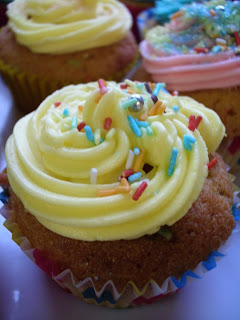Basically, it's banjaxed.
 But enough of that! Recently, I've rediscovered my fascination with gingerbread houses. In my pursuits of learning German I've been watching a lot of cookery videos in German, and the bakery staple of that fabulous country is lebkuchen, which basically is gingerbread. The German people - in my narrow experience - seem to have as great a love for the gingerbread house as our American cousins - based also on my narrow experience. As such, my interest in 3D constructions with
But enough of that! Recently, I've rediscovered my fascination with gingerbread houses. In my pursuits of learning German I've been watching a lot of cookery videos in German, and the bakery staple of that fabulous country is lebkuchen, which basically is gingerbread. The German people - in my narrow experience - seem to have as great a love for the gingerbread house as our American cousins - based also on my narrow experience. As such, my interest in 3D constructions with gingerbread laminae has been reignited.
But, my musings on 3D gingerbread constructions is not limited to architecture alone, but to how one could make animals and people that will stand up of their own accord. The company SUCK UK does 3D dinosaur biscuit cutter sets that look awesome, but I wanted to try my own hand at this ambitious design. I went through a few ideas and sketches, but then I arrived at a seemingly juvenile solution when I was nostalgically looking through one of my childhood cooking books: a dinosaur sandwich that due to its width will stand up of its own accord. This was the birth of the Dinosaur Kimberley.
For those of you who are not Irish, a Kimberley biscuit is a confection made by Jacob's which is basically two round, soft gingerbread biscuits sandwiched together with marshmallow and edged with coarsely ground sugar (see here for a visual cue and bizarre advertisement). What better and more elegant way to solve the 3D dinosaur biscuit conundrum than by transforming it into a perennial Irish favourite.
I drew a little dinosaur shape onto some card and cut it out to use as a template. You could use a pre-bought one, or draw your own, or use a completely different shape.Without any further adon't, here's my gingerbread biscuit recipe.
INGREDIMENTS
For the gingerbread:
- 4 ounces (115 grammes) butter, or margarine, at room temperature
- 4 ounces (115 grammes) of brown sugar
- 1 ounce (30 grammes) of golden syrup, or treacle
- 1 medium egg
- 2 ounces (55 grammes) cornflour
- 7 ounces (200 grammes) spelt flour
- 2 teaspoons ground ginger
- 1 teaspoon ground cinnamon
- ½ teaspoon ground coriander
- ¼ teaspoon ground cloves
- Pinch of salt
For the marshmallow filling:
- 8 ounces (230 grammes) white sugar
- 1 ounce (30 grammes) golden syrup, or glucose syrup
- 4 fluid ounces (115 millilitres) water
- 3 drops white vinegar, or lemon juice
- 2 tablespoons (30 milliliters) gelatine powder
- Pinch of salt
HOW TO
For biscuits:
- Sieve the flours, spices and salt together into a large bowl to mix together consistently; set aside.
- In another bowl, cream the butter, sugar, and syrup or treacle until pale and fluffy with a wooden spoon, spatula or electric hand mixer. Beat in the egg until fully combined.
- Add in half of the dry ingredients and beat until fully mixed but still soft, then add in the remaining dry ingredients. You might need to use your hands to mix in the remaining flour.
- Mix into a smooth dough that is soft but not sticky. Flatten out to an inch thick (2 centimeters) and wrap in cling film. Refrigerate for at least 1 hour. This dough also freezes well if you don't need it right now.
- Preheat your oven to 170°C (325°F, Gas Mk.3, or very moderate). Lightly grease two baking trays.
- Sprinkle the work surface with flour and roll out the dough to your desired thickness. For me, about 1/4 inch (6 millimeters) works well for soft, cakey biscuits, and 1/8 inch (3 millimeters) makes nice crispy biscuits.
- Cut out the biscuits and put on the trays. Bake for about 15 minutes, or until lightened in colour (that happens with spelt biscuits), set on the outside and ever so lightly browned around the edges.
- Remove from the oven and leave to cool for about 5 minutes before transferring to wire racks to cool completely.
For the marshmallow filling:- Put the sugar, syrup, salt, vinegar or cream of tartar, and half the water in a large heavy bottomed saucepan and heat gently, stirring until the sugar has dissolved.
- While the sugar is dissolving, pour the remaining water into a large bowl and sprinkle on the gelatine to bloom. This takes about ten minutes
- Once the sugar has dissolved, bring to the boil and cook to soft ball stage (115°C, or 240°F). This takes anywhere between ten to fifteen minutes.
- When the sugar has cooked to soft ball stage, prepare yourself. Have an electric hand mixer at the ready, and pour the sugar onto the gelatine in a thin stream while beating the mixture. Beat the living daylights out of the mixture for a solid ten minutes, or until cool and about tripled in size.
- Lightly grease the inside of a piping bag, fitted with a medium-sized round nozzle, and fill it with the marshmallow mixture. Working very quickly, fill and sandwich the biscuits. Whatever marshmallow mixture is left over can be piped into shapes on a greased baking tray that has been liberally and heavily dusted with icing sugar.
These would be even nicer if they were iced with royal icing and then sandwiched; the ultimate sugar rush.




















